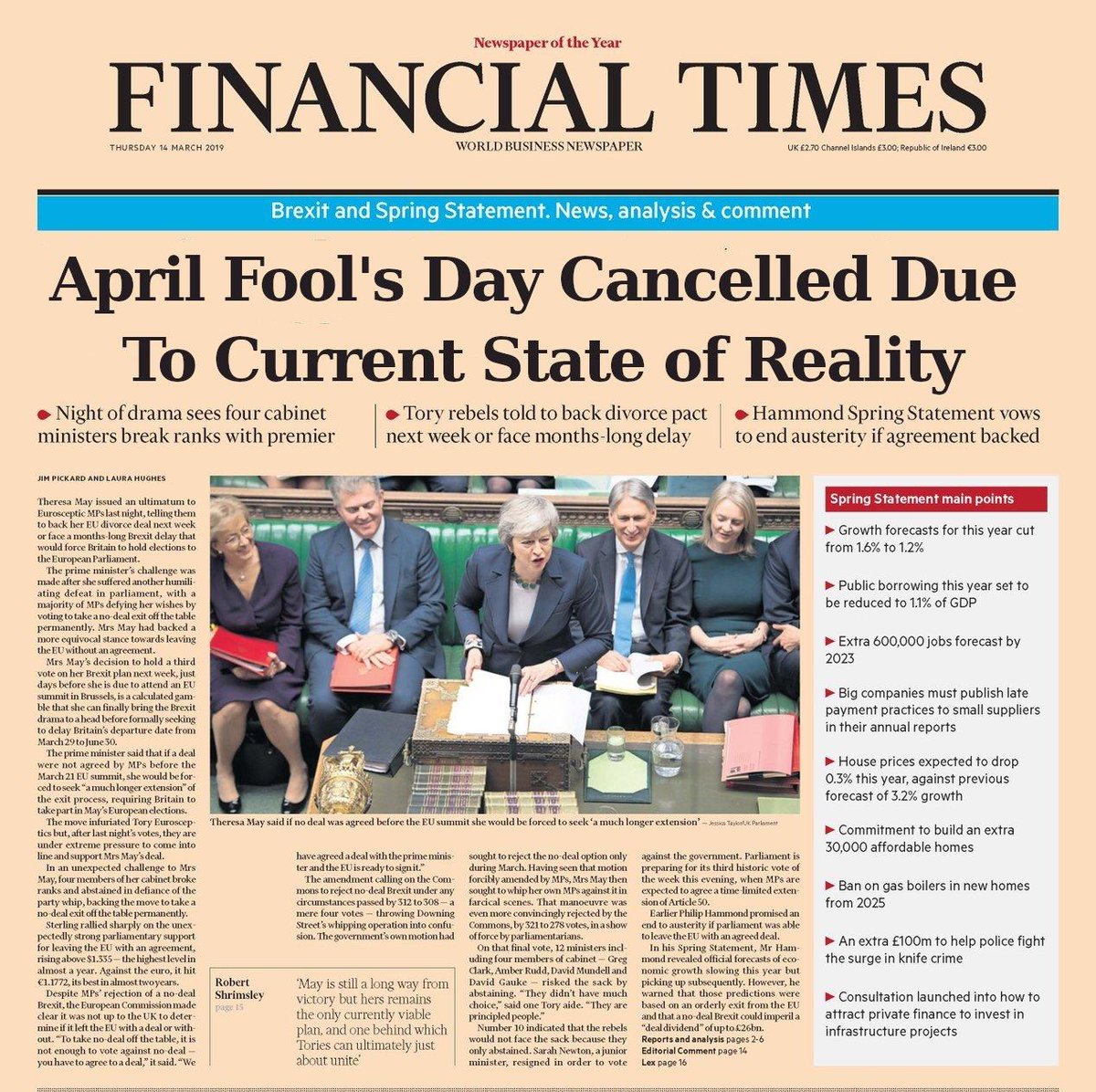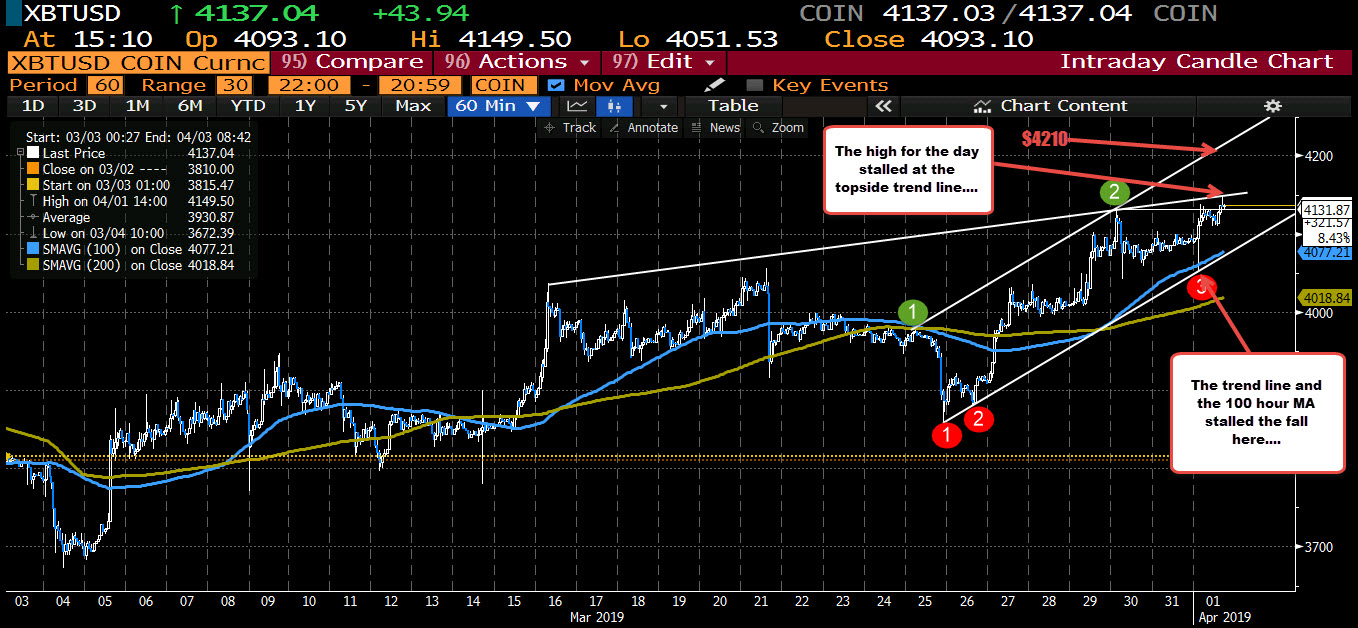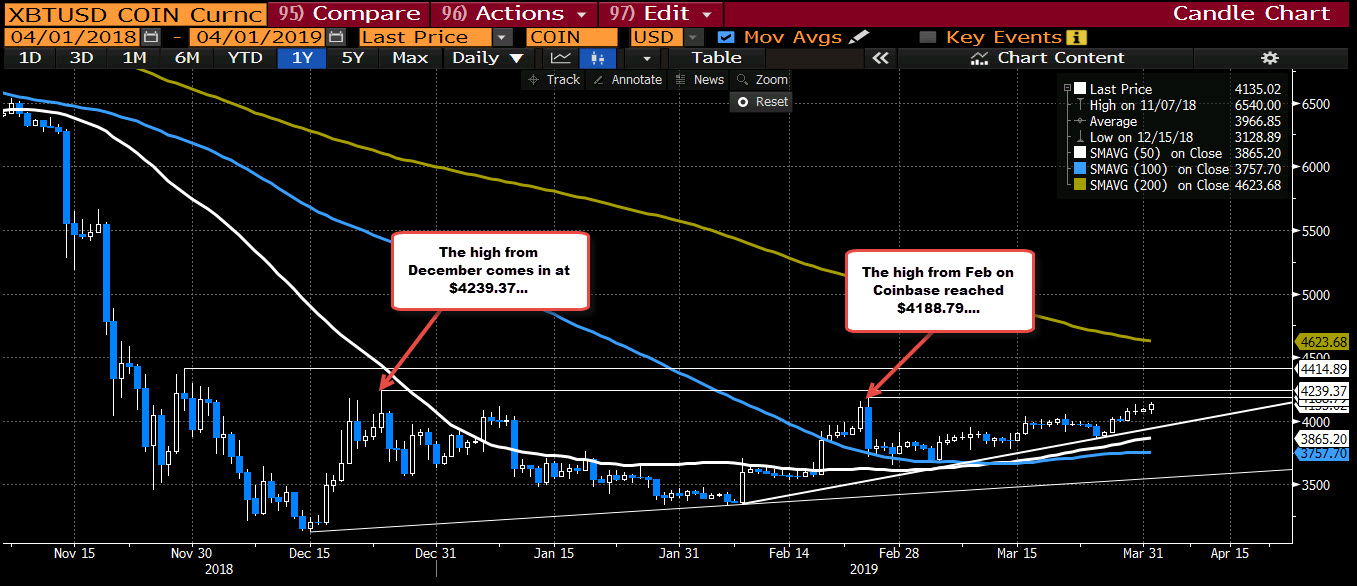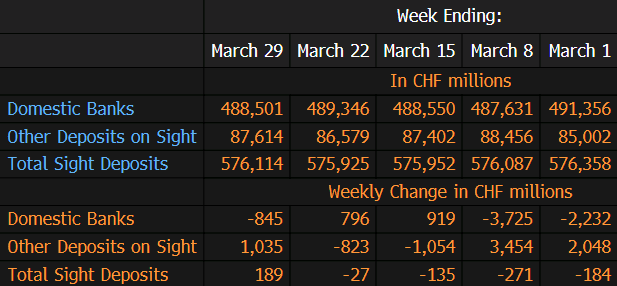Look for some additional profit taking against the key MA level.












The Euro is on the ropes with economic growth being scaled back and the ECB making concerned noises about its future path. The revised growth forecasts out earlier this month on March 7 were:
Inflation:
This was on the back of growth forecasts scaled back in December 2018 too. Draghi on Wednesday 27 March last week gave a catchy sound bite to sum up where the ECB were at. He said that the situation was ‘delayed, not derailed’. He also spoke about the resilience of the economy as well as ‘risks being tilted to the downside’. A series of cheap loans to eurozone banks was implemented by the ECB. Known as LTRO’s (Long term refinancing options), the loans provide funding to eurozone banks which the ECB have used in the past and became popular during the financial crisis of 2008. Here was Draghi speaking on the loans on March 27:
The Governing Council also decided to launch a new series of targeted longer-term refinancing operations (TLTRO-III) in order to preserve favourable bank lending conditions and maintain the efficient bank-based transmission of our policy.
These decisions ensure that our policy stance remains accommodative in the face of a weaker growth outlook. And the calibration of the remaining parameters of the TLTRO-III will reflect the evolving macroeconomic conditions. A slew of Eurozone data out shortly will give us an indication of where the dust has settled for now with the poor recessionary PMI readings. Remember how Germany’s poor PMI reading of 44.7 sparked concerns around the middle of March on Friday (March 22). Here was Justin’s instantly insightful comments at the time as he gave the heads up on just how bad a miss that reading was:
Boom! That’s a massive miss on manufacturing/factory sentiment and it is sending the euro to session lows on the day. It’s a third straight contraction for manufacturing PMI but the size of the miss here is really what is driving the euro lower at the moment.For some context, the manufacturing print is the lowest since August 2012 while the composite print is dragged lower as a result to its weakest print since June 2013.
All eyes now turn to the euro PMI’s.
